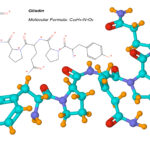(StatePoint) Asthma, a lung disease that makes breathing difficult for over 24 million Americans, is often exacerbated by air pollution and the effects of climate change. Understanding how the environment impacts asthma can help you minimize your exposure to air pollutants and prepare for extreme weather events. As part of its Promoting Asthma Friendly Environments through Partnerships and Collaborations Project, the American Lung Association offers helpful insights.
Outdoor Air Pollution. While outdoor air pollution can make breathing more difficult for everyone, it’s particularly harmful to those with asthma, causing symptoms and increased need for medical attention, and to children, whose lungs are still growing and who breathe in more air per pound than adults. Children with asthma can be especially vulnerable to experiencing negative health effects caused by air pollution.
Climate Change. The effects of climate change increase air pollutants like ozone, particle pollution pollens, molds from increased rainfall and floods, and smoke from wildfires. As temperatures increase, warmer air helps to form ground-level ozone pollution, also known as smog, a powerful air pollutant. Smog acts like a sunburn on your lungs, and may trigger an asthma attack. Before doing any activities outside, check the pollution level in your area by visiting Airnow.gov. When the air is bad, limit the time you and family members spend outdoors, and try to move outdoor activities inside.
Wildfires. In some areas of the country, climate change is increasing the frequency and intensity of wildfires, and extending wildfire season. Wildfires produce smoke that contains dangerous particles, tiny enough to travel deep into the lungs, and sometimes even into the bloodstream. Particle pollution can cause asthma attacks, heart attacks, lung cancer, and early death. Winds can carry these particles for thousands of miles, meaning many people may have an unknown exposure. Check out American Lung Association’s resources, which include information about using N-95 masks for protection and creating a clean room inside your home. Visit www.lung.org/clean-air/emergencies-and-natural-disasters/wildfires to learn more.
Take Action to Reduce Air Pollution. You can reduce your own contribution to air pollution and climate change. Start by prioritizing walking, biking, and public transit over diesel- or gasoline-powered vehicles. Conserve electricity and purchase your power from clean, non-combustion sources if possible. Don’t burn leaves or trash, and avoid burning wood whenever possible. When looking for a place to live or upgrading your home, choose efficient, zero-emission appliances like induction stoves or heat pumps. Often, there are tax incentives for making these upgrades.
If poor air quality, wildfires, pollen, and mold cause asthma symptoms or flare-ups, follow your asthma action plan, and call your doctor if your symptoms don’t improve or get worse. To get your asthma under control, check out the American Lung Association’s many resources, found at https://www.lung.org/lung-health-diseases/lung-disease-lookup/asthma, which align with the Centers for Disease Control and Prevention’s EXHALE strategies. These strategies can help reduce asthma symptoms, prevent emergency hospital visits, and help you avoid missing school or work. If you have asthma and have been impacted by poor air quality, consider sharing your story on www.Lung.org.












